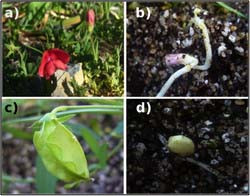Ecology of underground fruits explained
The EU-funded TEE-OFF (The evolutionary ecology of underground fruits) project investigated why some organisms do not disperse. Therefore, plants with non-dispersing underground (geocarpic) fruits were compared with similar taxa with aerial fruits, which disperse easily. Underground fruits are believed to maximise local adaptation as well as (according to Charles Darwin) prevent predation from pests such as beetles and weevils. Two cultivated legumes native to Europe (Lathyrus amphicarpos and Vicia amphicarpa) and their closest relatives were used during the project. The aim was to determine to what extent dispersal is a product of adaptive processes, phenotype plasticity (changing in response to changes in environment) or genetic divergence. Observational studies were used to establish the extent to which dispersal imposes constraints on the geographical distribution of plants. It was also used to determine if specific dispersal conditions provide an evolutionary advantage under certain environments and how dispersal changes in response to predation. Results showed that mixed dispersal strategies as used by amphicarpic plants (those that produce two kinds of fruit) are adaptive whenever conditions are unpredictable. Limited dispersal, as in geocarpy, is adaptive only under very particular conditions, such as when the environment is highly unpredictable and the probability of local establishment is very high. The role of geocarpy in avoiding predation was tested and showed that underground fruits exhibit higher rates of predation than aerial fruits in the field. In addition, they do not ensure fitness under predator pressure. However, underground pods do escape attention from groups of certain seed-eating insect, which only seem to attack aerial fruits. TEE-OFF findings provide valuable insights into the evolutionary ecology of dispersal as well as having potential applications in crop breeding.
Keywords
Ecology, underground fruits, dispersal, geocarpic, predation

